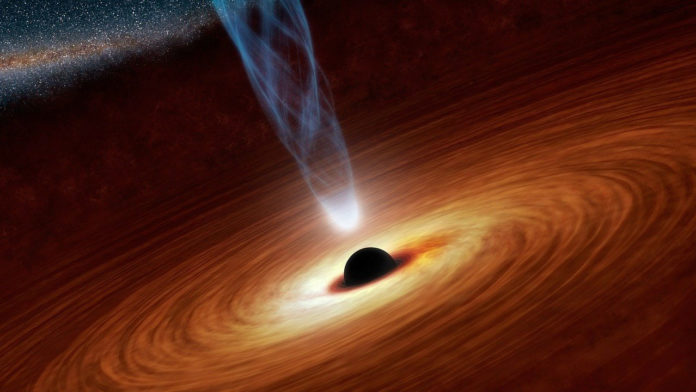In the 1970s, Stephen Hawking found that an isolated black hole would emit radiation but only when considered quantum mechanics. This is known as black hole evaporation because the black hole shrinks. However, this led to the black hole information paradox.
If the black hole evaporates entirely, physical information would permanently disappear in a black hole. However, this violates a core precept of quantum physics: the information cannot vanish from the Universe.
A new study by an international quartet of physicists suggests that black holes are more complex than originally understood. They have a gravitational field that, at the quantum level, encodes information about how they were formed.
The research team includes Professor Xavier Calmet from the University of Sussex School of Mathematical and Physical Sciences, Professor Roberto Casadio (INFN, University of Bologna), Professor Stephen Hsu (Michigan State University), along with Ph.D. student Folkert Kuipers (University of Sussex). Their study significantly improves understanding of black holes and resolves a problem that has confounded scientists for nearly half a century; the black hole information paradox.
Physicists resolved this paradox by showing that black holes have a property that they call “quantum hair.”
In the 1960s, eminent physicist John Archibald Wheeler expressed that black holes lack any observable features beyond their total mass, spin, and charge, saying “black holes have no hair.” This is known as the no-hair theorem.
Physicists demonstrated that the black holes have an additional characteristic called ‘quantum hair from gravity.’ They used specific mathematical methods to perform calculations in quantum gravity. Doing so, they showed that matter falling into the black hole leaves an imprint in the gravitational field of the black hole when considering quantum gravitational corrections. This imprint is referred to as ‘quantum hair.’
Scientists compared gravitational fields of two stars with the same total mass and radii but different compositions. At the classical level, the two stars have the same gravitational potential, but the potential depends on the star composition at the quantum level. When the stars collapse into black holes, their gravitational fields preserve the memory of what the stars were made of and lead to the conclusion that black holes do have hair, after all.
This ‘quantum hair’ offers a mechanism by which information is preserved during the collapse of a black hole.
Reflecting on the quantum hair’s implications for physics, Xavier Calmet, Professor of Physics at the University of Sussex, said: “Black holes have long been considered the perfect laboratory to study how to merge Einstein’s theory of general relativity with quantum mechanics. It was generally assumed within the scientific community that resolving this paradox would require a massive paradigm shift in physics, forcing the potential reformulation of either quantum mechanics or general relativity.
“What we found – and I think is particularly exciting – is that this isn’t necessary. Our solution doesn’t require any speculative idea; instead, our research demonstrates that the two theories can be used to make consistent calculations for black holes and explain how information is stored without radical new physics.
“It turns out that black holes are, in fact, good children, holding onto the memory of the stars that gave birth to them.”
Explaining the discovery of the quantum hair, Roberto Casadio, Professor of Theoretical Physics from the University of Bologna, said: “A crucial aspect is that the collapse of compact objects forms black holes, and then, according to the quantum theory, there is no absolute separation between the interior and the exterior of the black hole. In classical theory, the horizon acts as a perfect one-way membrane that does not let anything out, and the exterior is, therefore, the same for all black holes of a given mass. This is the classical no-hair theorem. However, in quantum theory, the state of the matter that collapses and forms the black hole continues to affect the state of the exterior, albeit in a way that is compatible with present experimental bounds. This is what is known as quantum hair.”
Stephen Hsu, Professor of Theoretical Physics and Professor of Computational Mathematics, Science, and Engineering from Michigan State University added: “The concept of a causal horizon is central to the notion of a Black Hole. What is behind the horizon cannot, in classical physics, influence the exterior. We showed intricate entanglements between the quantum state of the matter behind the horizon (inside the hole) and the state of gravitons outside. This entanglement makes it possible to encode quantum information about the black hole interior in Hawking radiation that escapes to infinity.”
Journal References:
- Xavier Calmet, Roberto Casadio, Stephen D. H. Hsu, and Folkert Kuipers. Quantum Hair from Gravity. DOI: 10.1103/PhysRevLett.128.111301
- Xavier Calmet, Stephen D.H.Hsu. Quantum hair and black hole information. DOI: 10.1016/j.physletb.2022.136995
